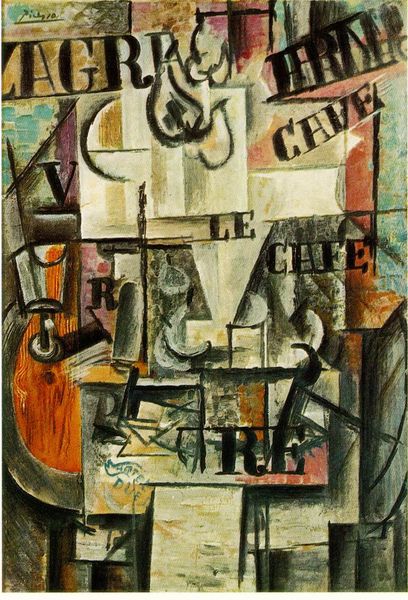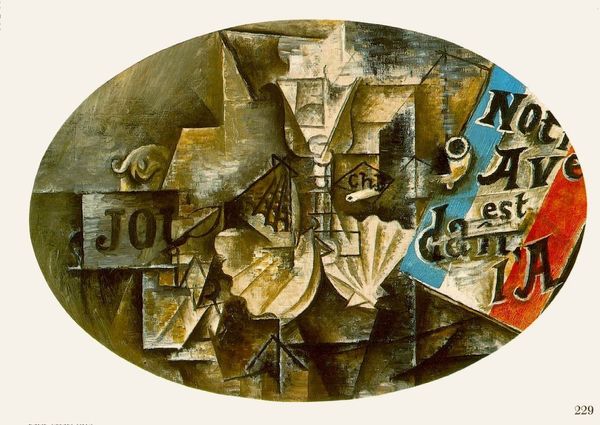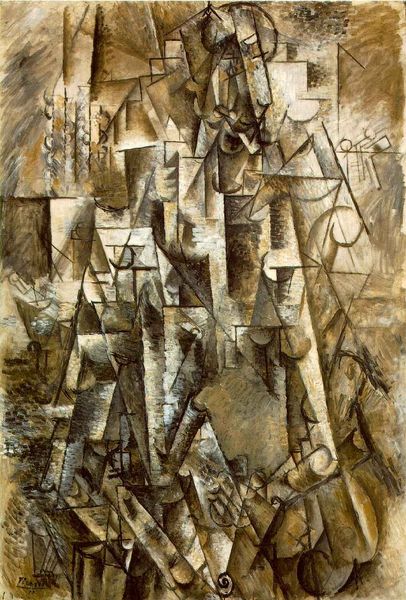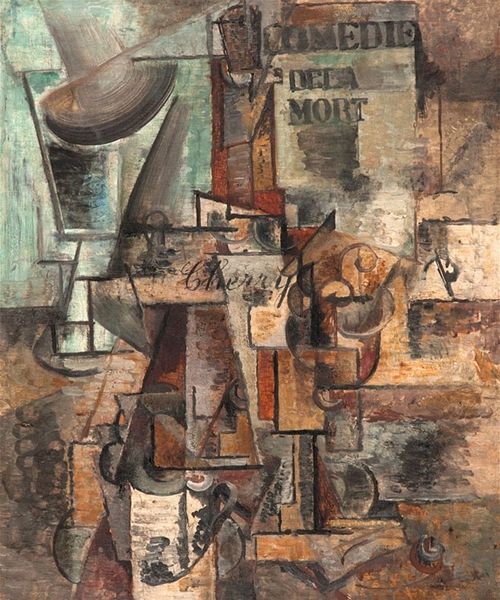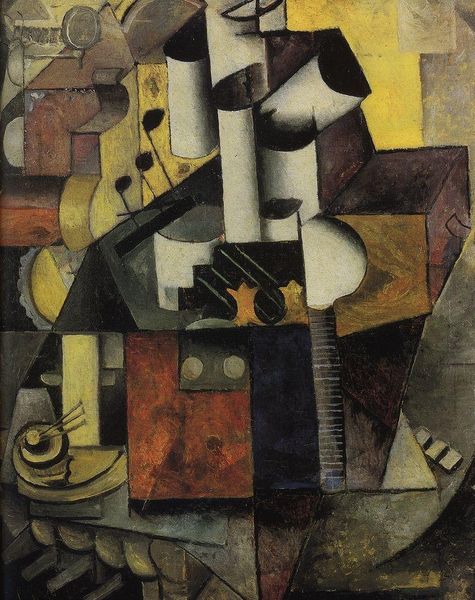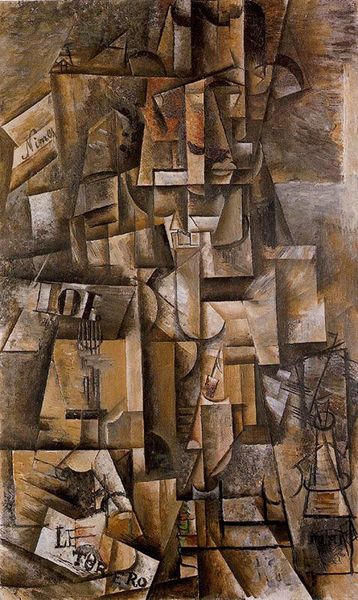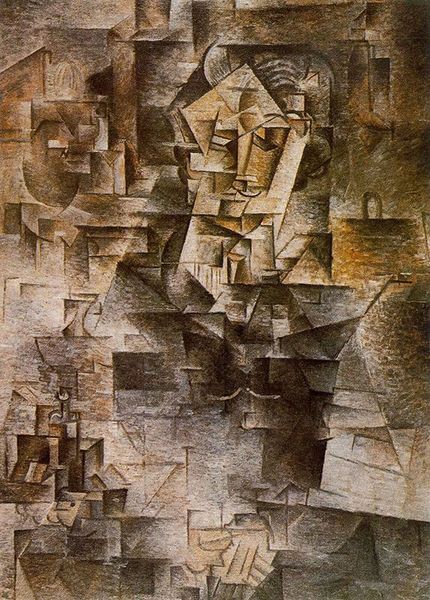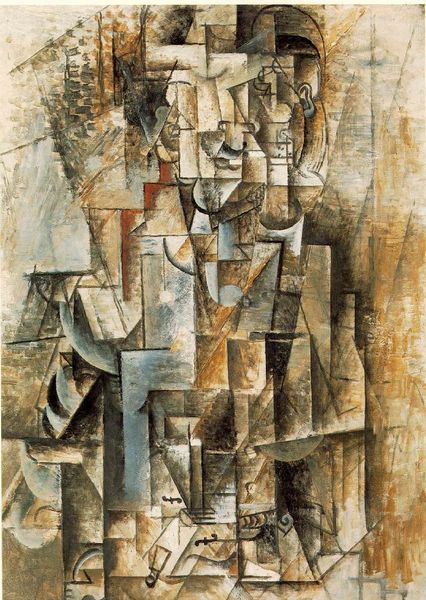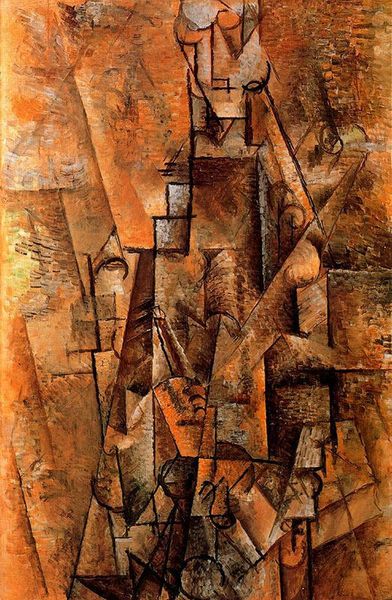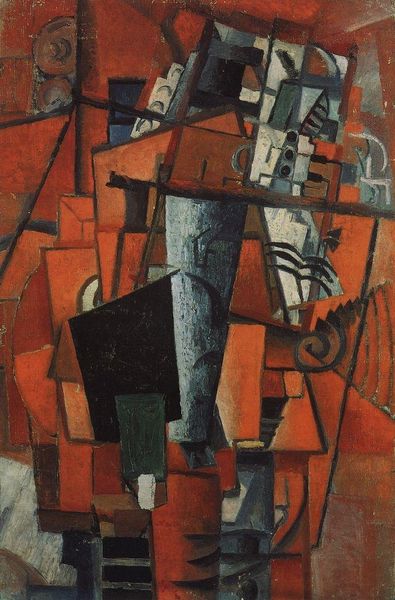
oil-paint
#
cubism
#
oil-paint
#
oil painting
#
abstraction
#
modernism
Dimensions: 81 x 54 cm
Copyright: Public domain US
Editor: Here we have Picasso's "Violin, glass, pipe and inkwell" from 1912, rendered in oil paint. It’s…well, fragmented, almost like looking through broken glass. I'm intrigued but a little lost! What do you see in this piece, especially considering the historical context? Curator: It’s understandable to feel disoriented initially. Early Cubism, like this piece, challenges our perception of reality. Consider this not as a still life *of* these objects, but more like an exploration *of seeing itself*. Think about the political landscape of 1912 – rising industrialization, burgeoning nationalisms, and anxieties about modernity. How might this fragmentation reflect the breakdown of traditional social structures and ways of understanding the world? Editor: That's interesting. So the shattered image mirrors the social and political upheaval of the time? It’s not just about aesthetics but also about reflecting a deeper societal anxiety? Curator: Exactly. Picasso and his contemporaries were grappling with representing a world in rapid flux. He’s dismantling traditional perspectives, inviting us to piece together a new understanding. Notice the inclusion of text – fragments of newspapers, labels. How might these allude to mass media and its impact on shaping public opinion during this period? Editor: It makes me think about how information was becoming increasingly accessible but also increasingly manipulated. I suppose I hadn’t considered how even a still life could comment on that. Curator: And what does the inclusion of leisure objects - violin, pipe, glass - suggest about the lives and values of the bourgeoisie at that time? Are they symbols of privilege, comfort, or perhaps, of escapism? Editor: I never thought of Cubism as having that activist angle, reflecting political realities within its shattered surfaces. Thanks, I learned a lot! Curator: My pleasure! Art can indeed become a powerful mirror and agent of change when viewed through an intersectional and historical lens.
Comments
No comments
Be the first to comment and join the conversation on the ultimate creative platform.

